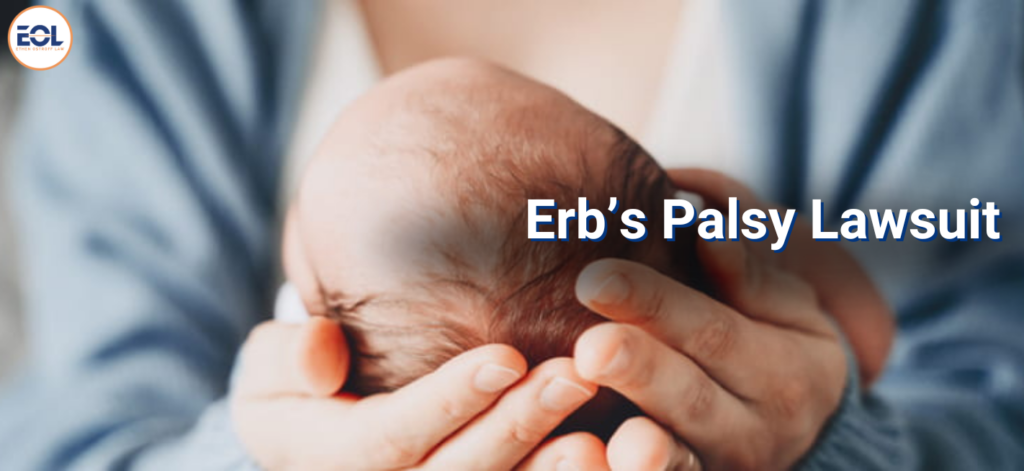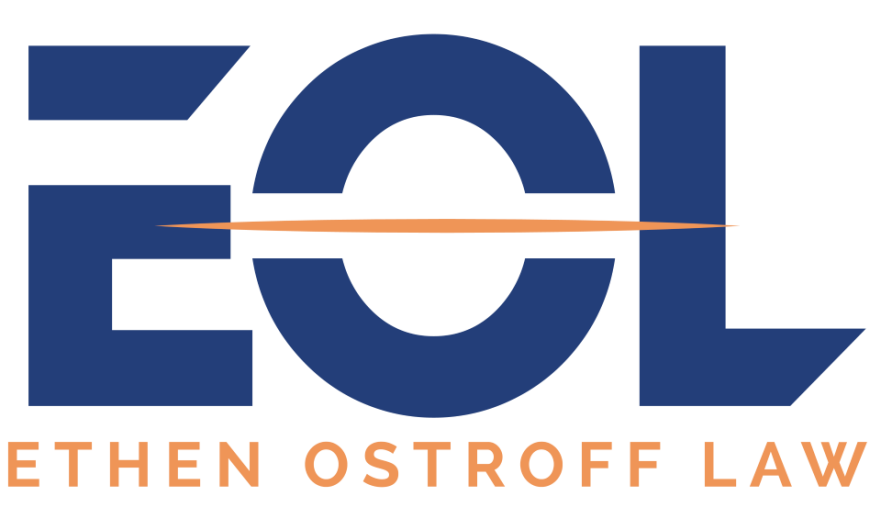Erb's Palsy Lawsuit: Seeking Compensation for Birth Injuries
When it comes to birth injuries, Erb’s palsy is a significant concern for families. This condition can result in lifelong challenges, often due to preventable medical errors during childbirth. If your child has been diagnosed with Erb’s palsy, you may be wondering about your legal options. Can you seek compensation? Who might be at fault? What are the possible outcomes of pursuing an Erb’s palsy lawsuit? In this comprehensive guide, we address these questions and provide insights into navigating the legal landscape surrounding Erb’s palsy claims.
Erb's Palsy: Understanding the Condition
Erb’s palsy, also referred to as Erb-Duchenne palsy or brachial plexus birth palsy, impacts an infant’s arm movement and sensation. This condition arises when the brachial plexus, a network of nerves near the neck, sustains damage during childbirth. Responsible for controlling the muscles in the shoulder, arm, and hand, these nerves can lead to weakness, paralysis, or restricted motion in the affected arm when injured.
The prevalence of Erb’s palsy in the United States varies. It is estimated to range from 0.9 to 2.6 cases per 1,000 live births. Constituting 45% to 50% of all cases, Erb’s palsy stands as the most common type of brachial plexus palsy. This condition typically correlates with nerve damage in the C5 to C6 sections of the spine.
Types of Erb's Palsy
Erb’s palsy is categorized based on the extent of nerve damage to the brachial plexus, which controls movement and sensation in the shoulder, arm, and hand. Here are the main types:
- Lower brachial plexus injury: Affects nerves C7, C8, and sometimes T1. Symptoms include weakness or paralysis in the forearm and hand, with limited finger movement.
- Total brachial plexus injury: Severe damage to the entire brachial plexus, resulting in complete paralysis and loss of sensation in the arm, from shoulder to fingers.
- Upper brachial plexus injury: Involves nerves C5 and C6, often from excessive stretching during childbirth. Symptoms include weakness or paralysis in the shoulder and upper arm, with limited elbow and wrist movement.
- Waiter’s tip position: Characterized by a limp arm hanging at the side with the shoulder internally rotated and the forearm turned inward. This stance reflects weakness or paralysis in the affected nerve-controlled muscles, typically seen in upper brachial plexus injuries.
Understanding these classifications helps determine the severity and location of nerve damage in Erb’s palsy cases, guiding treatment decisions. Consulting healthcare professionals is essential for proper evaluation and management.

Risk Factors for Erb's Palsy During Birth
Several factors increase the risk of Erb’s palsy. Identifying these risk factors helps healthcare providers take the necessary precautions during delivery. Here are some common risk factors:
- Advanced maternal age: Women aged 35 or older may have larger babies or labor complications, increasing the risk of brachial plexus injuries in infants.
- Assisted delivery: Using forceps or vacuum extraction during delivery raises the risk of Erb’s palsy if excessive force is applied or if tools are misused.
- Birth trauma: Rapid or forceful delivery, umbilical cord issues, or fetal distress can suddenly stretch or compress brachial plexus nerves, causing injury.
- Fetal positioning: Babies in breech position or with arms raised are at higher risk of shoulder dystocia and brachial plexus injuries during delivery.
- Maternal factors: Maternal obesity, poorly controlled diabetes, or a history of shoulder dystocia in previous deliveries contribute to macrosomia, increasing the likelihood of brachial plexus injuries.
- Multiparity: Women with multiple pregnancies have a higher risk of larger babies or shoulder dystocia, increasing brachial plexus injury risk.
- Prolonged labor: Difficult labor increases pressure and stretching on the baby’s head and neck, increasing the risk of Erb’s palsy.
- Shoulder dystocia: When a baby’s shoulder gets stuck behind the mother’s pubic bone during delivery, it can lead to brachial plexus injuries due to pressure and stretching.
While these factors raise Erb’s palsy risk, not all exposed infants develop the condition. Recognition and appropriate management during labor and delivery help reduce Erb’s palsy and other birth injuries.
Signs and Symptoms of Erb's Palsy
Recognizing signs and symptoms of Erb’s palsy is vital for early detection and intervention. While these can vary based on nerve damage, here are common indicators:
- Abnormal posture: Infants may keep the affected arm close to the body with a bent elbow and inward forearm rotation.
- Asymmetric movement: Movement in the affected arm may differ from the unaffected side, causing an uneven appearance during activities.
- Decreased sensation: Some infants may show reduced sensitivity to touch, temperature, or pain in the affected arm.
- Lack of Moro reflex: The normal startle response, the Moro reflex, may be diminished or absent on the affected side.
- Limited range of motion: The affected arm may have restricted movement at the shoulder, elbow, or wrist joints, hindering reaching or grasping.
- Muscle atrophy: Severe cases may lead to muscle wasting in the affected arm due to disuse and a lack of nerve stimulation.
- Weakness or paralysis: Infants with Erb’s palsy often experience weakness or paralysis in the affected arm, making movement and control difficult.
Common symptoms include:
- Arm bent at the elbow and held against the body.
- Difficulty gripping or holding objects.
- Difficulty raising the affected arm.
- Loss of feeling or sensation in the affected arm or hand.
- Loss of muscle tone in the affected arm or hand.
- Weakness or paralysis in the affected arm or hand.
If your child exhibits these symptoms, seek medical advice promptly for proper evaluation and management.
Diagnosis and Treatment of Erb's Palsy
The severity of Erb’s palsy varies based on the extent of the nerve damage. In most cases, diagnosis occurs shortly after birth, allowing for early treatment and better recovery prospects. Below is an outline of the condition’s diagnosis and treatment:
Diagnosis
Identifying Erb’s palsy usually requires a comprehensive physical examination by a healthcare professional, such as a pediatrician, orthopedic surgeon, or neurologist. The diagnostic process may involve:
- Physical examination: A healthcare professional examines the infant’s arms and shoulders for weakness, limited mobility, and muscle atrophy.
- Medical history: Inquiring about the birth process, complications, and risk factors helps in diagnosis.
- Neurological assessment: Evaluating brachial plexus nerve function to identify weakness, paralysis, or sensory deficits.
- Electromyography: Measures muscle electrical activity to assess nerve damage extent.
- Imaging studies: X-rays, ultrasound, or MRI scans visualize shoulder, arm, and brachial plexus structures for abnormalities or injuries.
Treatment
Once Erb’s palsy is diagnosed, treatment varies based on severity and individual needs. Options include:
- Assistive devices: Splinting or bracing supports the affected arm, prevents muscle tightness, and aids in functional use during healing.
- Multidisciplinary care: A team of healthcare professionals provides comprehensive support, including pediatricians, orthopedic surgeons, neurologists, physical therapists, and occupational therapists.
- Occupational therapy: It helps infants develop daily living skills with customized interventions and adaptive equipment.
- Physical therapy: Focuses on improving muscle strength, range of motion, and coordination through therapeutic exercises and activities.
- Surgical intervention: Considered for severe cases with extensive nerve damage or impaired function. Procedures like nerve grafting or transfers aim to repair nerves, restore function, or improve muscle balance in the affected arm.
Early diagnosis and treatment enhance the likelihood of a full recovery.

Is Erb's Palsy a Disability?
Yes, Erb’s palsy can be classified as a disability, especially if it significantly hampers an individual’s ability to use their affected arm and carry out daily tasks. The severity of Erb’s palsy varies, but some individuals may experience long-term challenges related to muscle weakness, limited range of motion, and coordination issues in the affected arm. Consequently, people with Erb’s palsy may encounter difficulties in various aspects of life, including:
- Activities of daily living: Tasks like dressing, grooming, feeding, and bathing may pose challenges, particularly if the affected arm is severely impaired.
- Education: Erb’s palsy can impact a child’s participation in school activities requiring fine motor skills, handwriting, or physical education. Support services and accommodation may be necessary.
- Employment: Depending on the condition’s severity and functional impact, individuals with Erb’s palsy may face limitations in certain job roles requiring manual dexterity or the use of both arms. Workplace accommodation and assistive devices may be needed.
- Social participation: Participation in social and recreational activities involving sports, hobbies, or physical endeavors may be affected. Adaptations and modifications can aid inclusion and participation in social events.
Is Erb's Palsy Always Medical Malpractice?
While Erb’s palsy can stem from medical negligence, such as improper use of delivery instruments, it can also occur without malpractice. Contributing factors may include:
- Fetal positioning: The baby’s position during labor can influence Erb’s palsy risk. Breech position or raised arms increase the chance of shoulder dystocia and nerve injuries.
- Maternal factors: Conditions like gestational diabetes, obesity, or a history of shoulder dystocia heighten Erb’s palsy risk in infants due to macrosomia.
- Shoulder dystocia: This complication, where the baby’s shoulder gets stuck, raises the likelihood of Erb’s palsy. It can happen even with proper medical care and management.
Instances of Medical Malpractice Leading to Erb's Palsy
Erb’s palsy can sometimes be linked to medical negligence during childbirth. Here are some instances where malpractice may contribute to the condition:
- Delayed cesarean section despite clear indications of risk.
- Excessive force was exerted during delivery procedures.
- Failure to identify signs of fetal distress promptly.
- Improper techniques were employed during the delivery process.
Can You Sue For Erb's Palsy?
Yes. Families dealing with Erb’s palsy have various legal avenues to address their child’s injuries and expenses. Here are some options they may consider:
- Birth injury lawsuits: These target childbirth-related injuries caused by healthcare errors, seeking compensation for medical expenses and emotional distress.
- Class action lawsuits: Families can join collective legal actions with others in similar situations, potentially sharing costs and simplifying the process.
- Insurance claims: Compensation can be sought through birth injury insurance policies like medical malpractice or homeowners’ insurance, requiring timely action due to state deadlines.
- Medical malpractice lawsuits: Legal action against healthcare providers for negligence during childbirth, such as mishandling tools or ignoring complications, seeks to prove breach of care leading to harm.
- Product liability claims: Claims against manufacturers of defective childbirth equipment like forceps aim to hold them responsible for resulting damages.
Consulting an Erb’s palsy lawyer is crucial for guidance on legal options and fair compensation. Acting promptly is essential to meeting state deadlines.
Who is to Blame for Erb's Palsy Birth Injuries?
Determining responsibility for Erb’s palsy birth injuries hinges on the circumstances of childbirth and the factors contributing to the condition. While each case varies, several parties may bear responsibility:
- Healthcare providers: Obstetricians, midwives, and nurses must uphold a standard of care during childbirth. Deviation from this standard due to negligence or errors may make them liable for birth injuries, including Erb’s palsy.
- Hospitals or medical facilities: Facilities may be accountable if they fail to maintain protocols, staffing, equipment, or safety standards during childbirth. They can be held vicariously liable for employee negligence.
- Manufacturers of medical devices: Defective equipment like forceps or vacuum extractors can cause Erb’s palsy. Manufacturers may face liability for designing, manufacturing, or distributing faulty devices.
- Other parties: Third-party contractors or service providers contributing to hospital negligence may share liability. Issues like informed consent or patient education could also imply additional parties.
Identifying liability often requires a thorough investigation by legal and medical experts. Consulting an Erb’s palsy attorney is vital for evaluating the case, identifying responsible parties, and seeking appropriate legal recourse for the child’s injuries.

Why Pursue an Erb's Palsy Lawsuit?
Filing an Erb’s palsy lawsuit offers several crucial advantages for affected families. Here’s why pursuing legal action may be beneficial:
- Access to resources: Legal proceedings provide access to support services, advocacy groups, and valuable information tailored to birth injuries and developmental disabilities, aiding families throughout the process and beyond.
- Accountability: Legal action holds responsible parties liable for any negligence or errors contributing to Erb’s palsy, offering a sense of justice to affected families.
- Financial compensation: Lawsuits can secure compensation to cover medical expenses, ongoing therapy, assistive devices, and related costs, easing the financial strain and ensuring the child receives necessary care.
- Peace of mind: Pursuing legal recourse brings closure and peace of mind, empowering families to seek justice and secure the best possible future for their children.
- Preventing future injuries: Legal action sheds light on factors contributing to Erb’s palsy, prompting changes in healthcare practices and protocols to prevent similar injuries, thus enhancing patient safety.
Consulting Erb’s palsy lawyer is essential to assess your case, weigh the benefits and risks, and navigate the legal process effectively.
Initiating an Erb's Palsy Lawsuit
Filing an Erb’s palsy lawsuit involves these steps:
- Consultation: Meet with Erb’s palsy attorney to discuss your case and explore legal options.
- Evidence collection: Gather medical records and relevant documents related to childbirth and Erb’s palsy diagnosis.
- Filing a complaint: Your Erb’s palsy lawyer will help file a formal complaint outlining your case details and allegations.
- Investigation: The legal team will investigate childbirth circumstances and gather evidence.
- Negotiation or trial: Your lawyer will negotiate a settlement or proceed to trial if necessary.
- Resolution: The Erb’s palsy lawsuit concludes with a settlement or court judgment providing compensation for damages.
Timing for Filing an Erb's Palsy Lawsuit
When considering filing an Erb’s palsy lawsuit, timing is crucial:
- Child’s age: Laws regarding minors’ lawsuits vary, often allowing more time for filing. Special rules may extend deadlines until the child reaches a certain age or time after turning 18.
- Evidence collection: File the lawsuit when evidence like medical records and witness statements are accessible and fresh, strengthening your case.
- Legal consultation: Seek guidance from an Erb’s palsy lawyer to determine the ideal timing based on your case’s specifics and state laws.
- Prompt action: Act swiftly upon discovering the Erb’s Palsy diagnosis to gather evidence and meet any deadlines.
- Statute of limitations: Each state has a time limit, known as the statute of limitations, for filing lawsuits after an injury. Missing this deadline can forfeit your right to legal action.
Ultimately, consulting with a knowledgeable Erb’s palsy attorney promptly ensures proper timing for filing an Erb’s Palsy lawsuit and protects your legal rights.
Erb's Palsy Lawsuit Statute of Limitations
The time limit to file a case for Erb’s palsy varies by state and case details. Acting promptly and seeking legal advice early is vital to meet these limits and protect your right to seek legal action for birth injuries linked to Erb’s palsy.
Who Qualifies to File an Erb's Palsy Lawsuit?
Families affected by Erb’s palsy may qualify to file a lawsuit if certain conditions are met. Here’s a simplified guide:
- Child with Erb’s palsy: Typically, the child diagnosed with Erb’s palsy, or their legal guardian qualifies to file a lawsuit if the injury occurred during childbirth due to preventable factors.
- Evidence of negligence: There must be evidence suggesting that Erb’s palsy resulted from medical malpractice, such as improper delivery techniques or delayed medical interventions.
- Financial resources: Pursuing an Erb’s palsy lawsuit may require financial resources, but many attorneys offer free consultations and work on a contingency fee basis.
- Legal representation: Families often work with experienced attorneys specializing in birth injury cases to assess the case’s merits and advocate on their behalf.
- Statute of limitations: Lawsuits must be filed within the statute of limitations period set by the state’s laws, so prompt action is crucial.
Consult with Erb’s palsy lawyer to help determine eligibility and explore legal options for pursuing compensation.
What Is Erb's Palsy Lawsuit Settlement?
An Erb’s Palsy lawsuit settlement is an agreement between parties involved in a legal dispute over Erb’s palsy birth injuries, often reached before or during a trial. Here’s a simplified overview:
- Approval: Settlements require court approval to ensure fairness and legal compliance. Once approved, they become legally binding, and the lawsuit is typically closed.
- Avoidance of trial: Settling out of court helps parties avoid the time, expense, and uncertainty of a trial, leading to a quicker resolution.
- Compensation: Defendants agree to pay the plaintiff a sum of money to settle the claim, covering expenses like medical costs, future care needs, and pain and suffering.
- Fairness: Settlement amounts aim to fairly compensate for the child’s injuries and future needs. Attorneys work to negotiate just settlements reflecting the harm caused by Erb’s palsy birth injury.
- Legal terms: Settlement agreements may include confidentiality clauses, release of liability, or terms about future medical care for the child.
- Negotiated agreement: Erb’s palsy lawsuit settlements are negotiated between the plaintiff (the child’s family) and the defendant(s), which could be healthcare providers, hospitals, or medical device manufacturers.
Settlements vary based on factors like injury severity and defendant liability. Consulting with an Erb’s palsy attorney is vital for negotiating a fair settlement and protecting the child’s rights.
How to Get an Erb's Palsy Lawsuit Settlement
Erb’s palsy lawsuits often end with settlement negotiations outside court. Getting a fair settlement involves having experienced attorneys who understand birth injury cases well. They work diligently to represent your child’s needs and ensure fair compensation.
Compensation in Erb's Palsy Lawsuit
Compensation in an Erb’s palsy lawsuit covers various damages resulting from the birth injury. Here’s a simplified breakdown:
- Caregiver costs: Families receive compensation for expenses related to caring for the child, including hiring caregivers, home assistance, equipment, and home modifications.
- Lost earning capacity: Compensation accounts for the child’s future earning potential if Erb’s palsy affects their ability to work.
- Medical expenses: Past and future medical bills, including hospital stays, surgeries, therapies, and medications, are covered.
- Non-economic damages: These compensate for intangible losses like emotional distress, loss of enjoyment, and strained family relationships.
- Pain and suffering: Compensation addresses the physical pain, emotional distress, and diminished quality of life caused by Erb’s palsy.
- Punitive damages: Rarely awarded, these punish extreme negligence or misconduct.
The amount varies based on factors like injury severity, negligence, and jurisdiction laws. Consulting an experienced attorney helps assess the case’s value and pursue fair compensation.
Get Support from an Ethen Ostroff Law's Erb's Palsy Lawyer
At Ethen Ostroff Law, we empathize with the difficulties families encounter with Erb’s palsy. Our experienced team of lawyers is dedicated to offering compassionate assistance and expert legal representation to help you seek the justice and compensation your family deserves. Reach out to us now to arrange a free consultation and discover how we can support you with your Erb’s palsy lawsuit.


